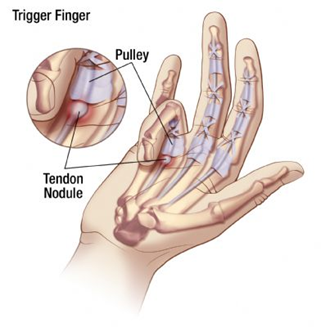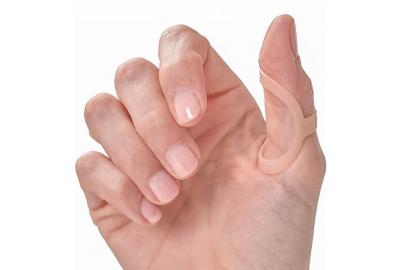Tendons are tough bands of fibrous tissue, which connect muscle to bone, and are enveloped in protective sheaths. Trigger finger occurs when a finger’s tendon sheath is irritated. This makes it more difficult for the tendon to glide smoothly through the sheath. It disrupts the function of the finger, as it bends and straightens.
Long-term swelling of the tendon sheath can lead to scarring and thickening, which can further affect the motion of the tendon. Over time, the tendon itself may become swollen. The snapping sensation may then occur, as the swollen tendon passes through the narrowed sheath.
The formation of a nodule is a common symptom of trigger finger. A nodule in trigger finger is a small, firm bump or lump that forms in the tendon or tissue of the finger. When the tendon becomes inflamed or irritated, it can cause the nodule to form, making it more difficult for the tendon to move smoothly through the tendon sheath. This can lead to a clicking or popping sensation when trying to straighten the finger, hence the name "trigger finger." Nodules can be treated with non-surgical interventions, such as rest, anti-inflammatory medication, and stretching exercises, or in more severe cases, surgery may be necessary.
Trigger finger is known to occur from repeated or forceful movements of the fingers. Medical conditions, such as diabetes and rheumatoid arthritis can also increase your risk for developing the condition.


Splinting is an excellent way to keep the affected finger in an extended position. This allows the tendon to heal and can reduce inflammation. The Oval 8 finger splint is comfortable, low profile, and convenient. It can be worn during the day for support, and at nighttime to keep the finger outstretched – limiting the possibility of getting stuck in the bent position.
Call us at 1-888-300-0063, or contact us for more information on this, and any other orthopaedic product.









